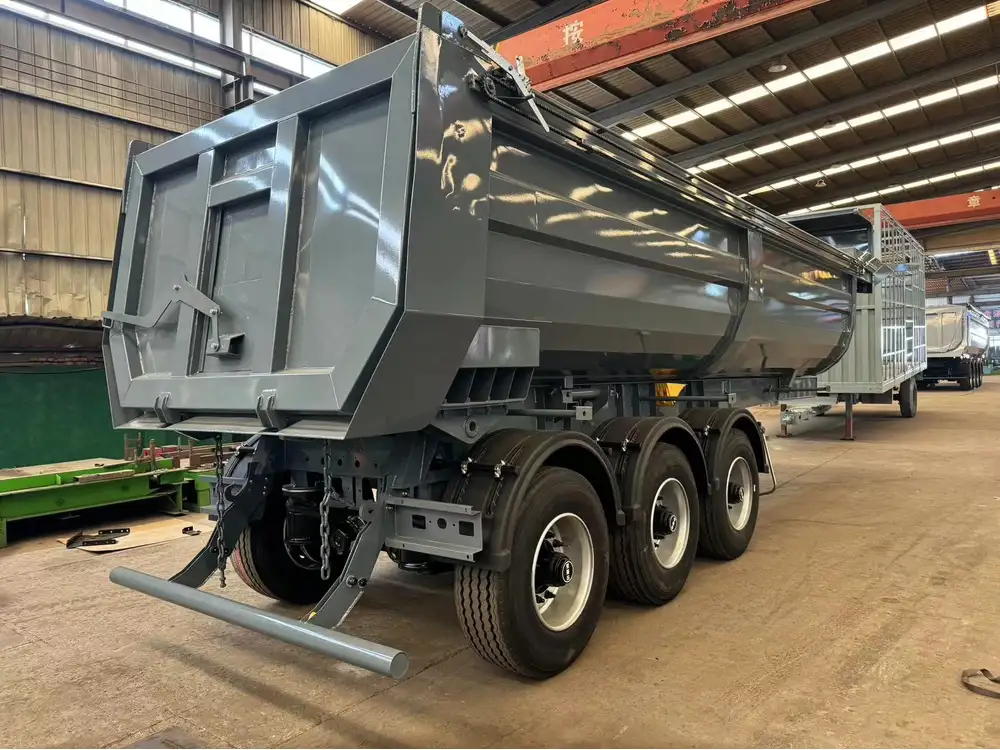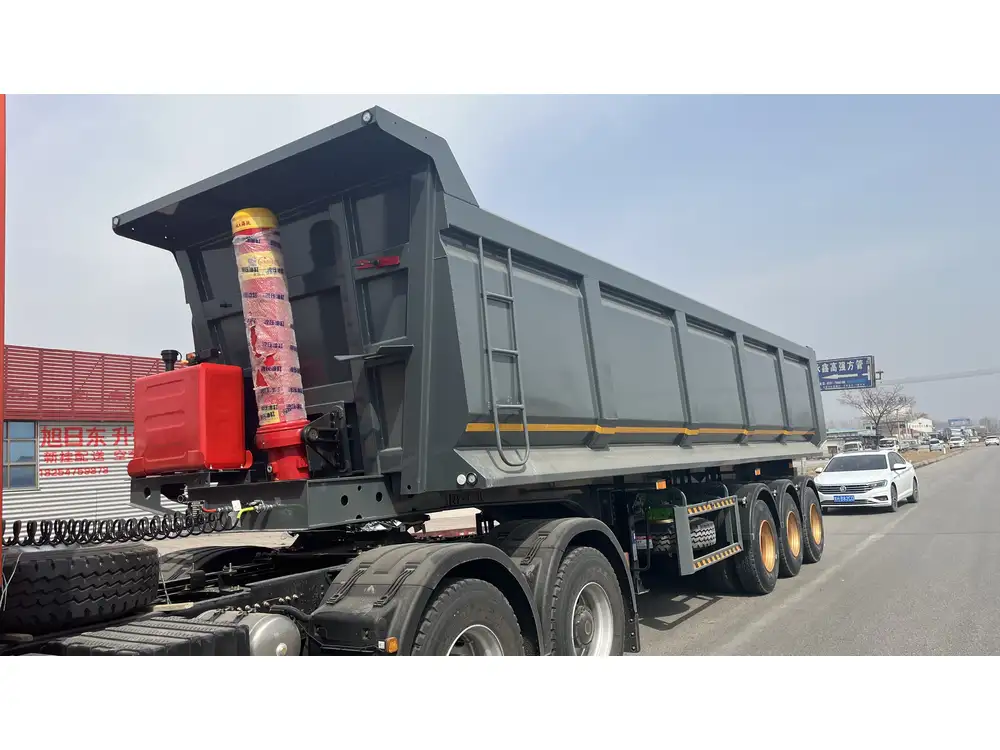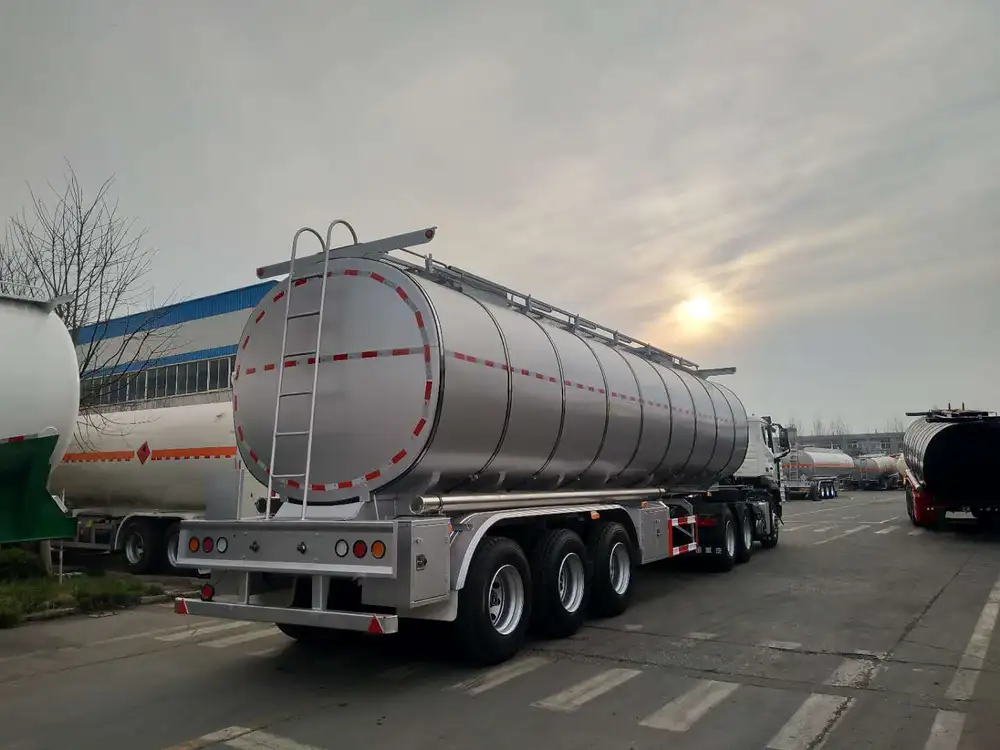Introduction to Semi-Trailer Dimensions
Semi-trailers are integral components of the freight transportation industry, playing a crucial role in moving goods across vast distances. Understanding the dimensions of semi-trailers is essential not only for compliance with regulations but also for optimizing logistics and load capacity. This guide delves into the various dimensions of semi-trailers, offering detailed insights into height, width, length, and weight limitations, enabling manufacturers, shippers, and logistics professionals to make informed decisions.
Common Dimensions of Semi-Trailers

1. Length
The length of a semi-trailer is one of its most defining characteristics and varies significantly based on the type and intended use. Common lengths include:
- Standard Length: Typically, the standard semi-trailer length is 53 feet, especially in the United States. This size maximizes cargo space while complying with federal regulations.
- Shorter Trailers: Trailers can also be found in lengths of 48 feet, 45 feet, or even 40 feet for specific applications, such as urban deliveries or specialized loads.
| Trailer Type | Length Range |
|---|---|
| Standard | 48 – 53 ft |
| Specialty | 28 – 45 ft |
| Twin Trailers | 28 ft (each trailer) |
2. Width
Width is another critical dimension, particularly when considering the cargo being transported and road regulations:
- Mandatory Width: The maximum width for semi-trailers on U.S. highways is typically 8.5 feet (102 inches). This width allows for various types of cargo without exceeding legal limitations.
- Narrow Trailers: Some specific applications might incorporate narrower trailers, especially when maneuverability in tight spaces is essential.
| Measurement | Standard Range |
|---|---|
| Maximum Width | 8.5 ft (102 in) |
| Minimum Width | 6.5 ft (78 in) |
3. Height
The height of a semi-trailer is vital for ensuring the safe transport of goods while adhering to height regulations, particularly when navigating underpasses, bridges, and tunnels:
- Typical Height: Most semi-trailers have a height ranging from 13.5 to 14 feet. This height is considered standard to ensure compliance while maximizing load volume.
- Special Considerations: Certain types of trailers, particularly those designed for specific industries (e.g., agricultural or machinery transport), may have significant height variations.
| Type | Typical Height |
|---|---|
| Standard Trailers | 13.5 – 14 ft |
| Specialized Trailers | Up to 16 ft |

4. Weight
Weight limits carry legal implications and significantly influence loading strategies:
- Gross Vehicle Weight Rating (GVWR): This is the maximum total weight permitted (trailer plus cargo). In the U.S., most combinations of tractor and semi-trailer need to stay within a GVWR of 80,000 pounds, although exceptions exist for specialized vehicles.
- Load Distribution and Axles: It’s crucial to consider the number of axles, as this affects both weight limits and load distribution across the trailer to mitigate wear and compliance issues.
| Parameter | Limit |
|---|---|
| Maximum GVWR | 80,000 lbs |
| Maximum per Axle Load | 12,000 – 34,000 lbs (depending on configuration) |
Types of Semi-Trailers and Their Unique Dimensions
As semi-trailers are designed to handle varied types of cargo, their dimensions may differ significantly. Here’s a breakdown of some common types:
1. Flatbed Trailers
Flatbed trailers typically lack sides and allow for the loading of wide or irregularly shaped items. Their standard dimensions follow general guidelines:
- Standard Length: Usually, 48 to 53 feet.
- Width: 8.5 feet.
- Height from Ground: 5.5 to 6 feet, affecting the overall cargo height when loaded.

2. Reefer Trailers
Refrigerated trailers (reefers) are insulated and equipped to transport temperature-sensitive goods.
- Standard Length: Usually spans 48 to 53 feet.
- Width: Often at 8.5 feet.
- Height: Typically around 13.6 feet, accommodating refrigeration units on top.
3. Dry Van Trailers
Dry vans are box-shaped trailers enclosed on all sides, designed to protect cargo from the elements.
- Standard Length: 48 to 53 feet.
- Width and Height: Both dimensions generally match the standard trailer measurements.
| Trailer Type | Length | Width | Height |
|---|---|---|---|
| Flatbed Trailers | 48-53 ft | 8.5 ft | 5.5-6 ft |
| Reefer Trailers | 48-53 ft | 8.5 ft | 13.6 ft |
| Dry Van Trailers | 48-53 ft | 8.5 ft | 13.6 ft |
Regulatory Considerations

Federal Regulations
- Length Restrictions: Federal law stipulates a maximum length of 53 feet for semi-trailers, though some states allow longer combinations, subject to specific conditions.
- Width and Height Limits: As stated earlier, the width cannot exceed 8.5 feet, while the height standard is often capped at 13.5 feet.
State Regulations
Variations exist at the state level. For example, California allows for specific permit exceptions for longer and wider vehicles under defined conditions. Understanding local regulations is essential for compliance.
Load Securement Regulations
Proper load securement is critical for safety and legality. Using certified equipment and methods to secure cargo reduces risk during transit and compliance issues results.

Factors Influencing Choosing the Right Trailer Dimensions
When selecting a semi-trailer, various parameters come into play:
1. Type of Cargo
The nature of your cargo will dictate your trailer requirements. Heavy machinery may need a flatbed, while temperature-sensitive goods will necessitate a reefer trailer.
2. Route Considerations
Understanding the route is essential, particularly with respect to height restrictions caused by bridges or infrastructure. Urban areas may necessitate smaller, more maneuverable trailers.

3. Loading and Unloading Facilities
Evaluate the locations where goods will be loaded and unloaded. Tight spaces may require shorter or narrower trailers for efficient handling.
4. Weight Restrictions
Complying with weight restrictions is paramount, as exceeding limits can incur heavy fines and operational risks. Familiarize yourself with local and state load limits, especially if crossing state lines.
| Factor | Consideration |
|---|---|
| Type of Cargo | Reefer, flatbed, dry van, etc. |
| Route Restrictions | Limitations based on infrastructure |
| Loading/Unloading Facilities | Required access width and height |
| Weight Restrictions | Compliance with GVWR and axle load limits |
Conclusion
Choosing the right dimensions for a semi-trailer is crucial for productivity, compliance, and the successful transportation of goods. By comprehensively understanding the standard dimensions, types of trailers, regulatory factors, and unique considerations surrounding cargo, businesses can make informed decisions that enhance efficiency within their operations.
As we navigate the complexities of the freight industry, it’s essential to remain updated on regulatory changes and technological advancements that may influence semi-trailer specifications. This understanding not only assures compliance but bolsters the overall capacity to meet varying logistical needs efficiently and effectively. As the demand for freight transport continues to grow, having in-depth knowledge of semi-trailer dimensions will serve as a valuable asset in ensuring seamless logistics operations.

Additional Resources
For more detailed specifications, consult:
- Federal Motor Carrier Safety Administration (FMCSA) guidelines.
- State transportation departments for localized regulations.
- Manufacturer’s specifications for unique trailer designs.
By adopting a thorough and informed approach to semi-trailer dimensions, businesses can ensure success in their operations while delivering exceptional service to their clients across various industries.



